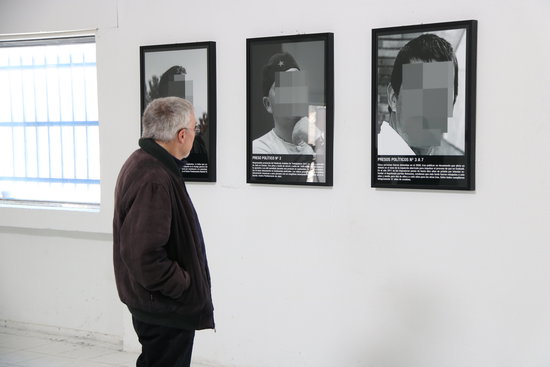Controversial 'political prisoner' work returns to Madrid art fair
Santiago Sierra's installation featuring jailed Catalan leaders goes on display in ARCO festival a year after it was pulled

The artwork ‘Political prisoners in contemporary Spain’ by Santiago Sierra returned to Madrid's ARCO international contemporary art fair on Monday, a year after it was controversially withdrawn by the organizers.
The artwork features 24 black and white photos of people in prison in Spain for supposed political reasons, with their faces pixelated, among them the former Catalan vice-president, Oriol Junqueras, and former activist and now MP, Jordi Sànchez.
Unlike last year, the piece is not being shown as part of the fair's main section but in the event's parallel VIP program. "It is a gesture to begin a new phase," Sierra told the Catalan News Agency (ACN), describing ARCO's willingness to show the work as "progress."
"No obstacles" to displaying the work
Curator Benito Padilla said the work is back at the fair according to the wishes of the artist and the owner of the piece, Tatxo Benet. Padilla also said the fair's organizers "did not put any obstacles in the way" of displaying the installation.
While the decision to pull the work from the fair last year caused controversy, Sierra says "I am very grateful they withdrew it," and points out that the piece went on to be displayed more than 40 times in Spain and Latin America, and was seen by almost 200,000 people.
Referring to the portrayal of Junqueras and Sànchez in the installation, both of whom are currently being tried in Spain's Supreme Court over the 2017 independence bid, Sierra said he hoped it might "raise their spirits."
After the work was withdrawn from the ARCO art fair last year, it was bought by the Catalan private collector, Tatxo Benet, and went on display in the Museum of Lleida, in western Catalonia, where it drew over 7,000 visitors, a record for the institution.